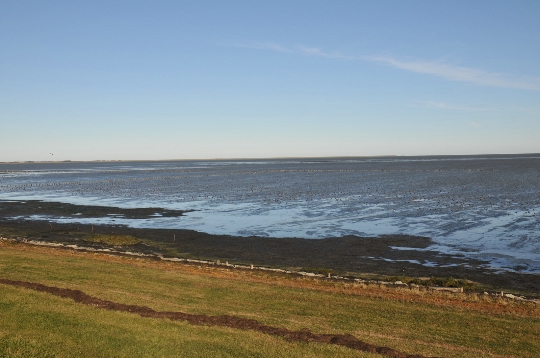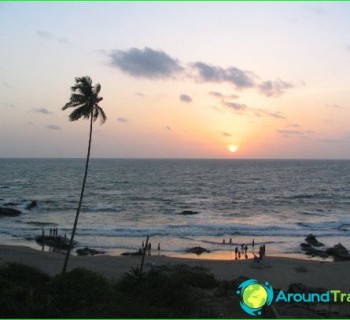Wadden sea

An unusual geographical feature is the Wadden Sea. It is formed by a series of shallow sea areas or watts. This sea is located off the coast of Denmark, Germany and the Netherlands. It belongs to the reservoirs of the North Sea. The total length of the Wadden Sea is 450 km. As a result of the ebb and flow of the tide, the landscapes here change daily. The water in the coastal areas exposes lowlands and ditches. Low tides drain this area twice a day. The flat and extensive coastal zone is represented by a whole complex of transitional ecosystems (between sea and land): shallow waters, sandbanks, canals, thickets of algae, banks, swamps and dunes.
How the Wadden Sea was formed
Watt is formed from silt and sand. North Sea Watts is a unique natural phenomenon. Large-scale shoals are found along the islands. The Wadden Sea map shows that Watts are separated from the open waters by small islands called East Frisian and North Frisian. Russian geographers do not distinguish the Wadden Sea as an independent object of geography. It is considered as a site in the North Sea. Designation «wadden sea» often used as a household noun. Examples of other wadden seas are the Bay of Fundy, the Bay of San Francisco, etc..
The wadded areas of the North Sea were formed between the 10th and 14th centuries. The reason for their formation is that peat deposits separated by sand from the ocean were washed away by water. The water area is shallow. Most of it is occupied by small islands and watts. Many islets are completely submerged during high tides..
Natural features
Throughout the water area, you can see small mounds, wetlands, peatlands, vast wastelands, small islands and meadows. All these natural formations make up a single ecosystem that has no analogues. This European ecosystem is protected by law. National parks and biosphere reserves have been established in the area. One of the sections of the Wadden Sea is listed as a UNESCO World Heritage Site. The Schleswig-Holstein Watt Park has an area of about 442 thousand hectares. Its significant area is covered with forests that stretch from Denmark to the Netherlands. The coast of the Wadden Sea is distinguished by a varied nature. Scientists have discovered 2,500 animal species and over 700 plant species there. The sea water is inhabited by flounder, seals, porpoises, etc. The Wadden Sea has rich gas deposits.



